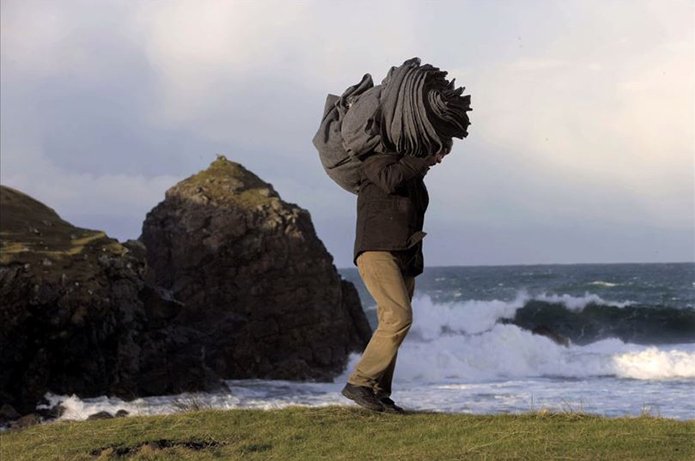
“Loom for sale with one bedroom house”, that is how important Clò Mòr, Gaelic for ‘The Big Cloth’, is in The Outer Hebrides – the hand-loom, the means of weaving Harris Tweed, this most quintessential of British cloths, can be as important as the dwelling itself. Weaving is, in fact, just part of the age-old process which transforms the most basic, and, if you have ever been in a shearing shed, the most rough and ready, of raw materials, sheep’s wool, into the most coveted of fabrics which graces the finest fashion houses of the world – authentic Harris Tweed.
The barren archipelago that is the Hebrides is nature’s forever changing palette of seasons and weather; dark grey-black rocks, pale white-shell-battered beaches, moorland hues of muted browns & greens, flashes of red-orange lichen, daubs of summer flower citrus & heather purples as well as vibrant blues of shallows worthy of the Tropics. This rainbow of natural colours, found on and around these most remote of British islands, is the inspiration for the heady kaleidoscopic mix of the vibrant and the subdued that come together, in a careful process, as a beautiful swatch of luxury fabric.
Although the wool itself is not necessarily Hebridean, due to the sheer volume required, it is the next best thing; Scottish, but everything else is. The water needed for the washing and dyeing; the aforementioned natural materials that inspire the shades needed to colour the yarn; and the skilled artisanal labour force, who are often also crofters, farmers and fishermen, working the utterly stunning and yet unforgiving landscape, each playing a particular part in the magical transformation from wool to wonderful woven cloth, all hail from these beautiful islands.
Tweed is an iconic British fabric, and to some may evoke visions, feelings, and memories of heavy, dour, scratchy, conservative attire, reserved for field sports and golf, yet, modern Harris Tweed is none of the above, it has gently evolved, whilst retaining all of it integrity. The quality of the materials and processes involved in its manufacture, in what can still be described as a ‘cottage industry’, has produced a light, soft, tactile, warm and sustainable cloth, whose timelessness and luxurious look and feel, remains in demand the world over, from classic twills and plaids to more contemporary and often bold stylish patterns. Harris Tweed has ridden peaks and troughs in demand and is still an aspirational wardrobe staple to the more discerning of customers, those who want to eschew cheaper mass-produced imitations and instead wear something that has been milled and woven by hand, on a beautiful Hebridean island, inspired by the wild beauty of the surrounding and the heritage of many generations of weavers…
Here, in the following transcript of an interview, Mark Hogarth, the creative director of the largest manufacturer of Harris Tweed, Harris Tweed Hebrides, gives us a special insight into the world of woven cloth, skilfully created in a traditional manner, but on a globally commercial scale, on these tiny islands dotted stoically in the relentlessly restless North Atlantic.
Firstly, for those readers that aren’t familiar with Harris Tweed Hebrides, please can you explain what you do?
We make and sell Harris Tweed to fashion houses, designers, retailers and tailors, selling jackets, bags and accessories, as well as the cloth itself. Harris Tweed Hebrides is one of only three Harris Tweed mills on the Hebrides and we are the largest producer of Harris Tweed.
Harris Tweed, in many respects, is arguably the most unique fibre in the world as it’s the only fabric produced in commercial quantities using traditional methods. It is much-loved throughout the world, and has been for a very long period of time, stretching back hundreds of years.
What separates Harris Tweed from other tweeds is that it is has to be made from virgin wool, which means the wool hasn’t been used or woven before, it has to be woven at the home of the weaver, and the mill and the weaver need to be based in the Outer Hebrides. An Act of Parliament was passed in 1993, making the definition of Harris Tweed statutory. With the passing of the Act, the Harris Tweed Association, formed in 1909 when the Orb Certification Mark was granted originally, then became known as the Harris Tweed Authority, and this body is tasked with promoting and maintaining the authenticity, standard and reputation of the world famous Harris Tweed cloth.
What are the qualities of Harris Tweed that make it so special and how can its authenticity be proved?
First and foremost, we dye the wool, and not the yarn. Essentially this means that every single micron of wool is saturated with colour, which is not the case when you only dye the yarn, which allows us to blend different coloured wools to create interesting, intricate and varied patterns of different shades and hues.
Secondly, the teasing, carding and spinning of the yarn is all done at our mill, so before it has even got to the weaver, we have a solid local artisanal process just to get the yarn.
Thirdly, the weaving process embodies everything that is special about Harris Tweed. It is a long process, which finishes with darners who check every square metre of tweed and correct any flaws they may find. Wool is a natural fibre after all, and occasional breakages sometimes occur which need to be repaired by hand – and then a final brush is carried out using a horse hair brush and tweezers to remove any specks of hair or other debris such as bits of straw or barley eyes, which can only be removed when the tweed has been woven, to create a flawless finished product. These final checks are symptomatic of the high standards we set ourselves and the care we show to create this high quality fabric. I’ve used this term many times before, but the luxury of Harris Tweed really is in the process.
The cloth is stamped as Harris Tweed by the Inspector/Stamper from the Harris Tweed Authority, once they confirm that the cloth has been woven according to the terms defined in the Harris Tweed Act, as I described earlier. The world famous Orb stamp is then ironed onto the wrong side of the cloth and only at that point does it become known as Harris Tweed.
There seems to be a mystical relationship in the Hebrides between the land and the cloth in terms of the heritage and tradition of creating Harris Tweed going back centuries. Can you provide some insights into this unique way of life?
The beauty and complexity of the natural environment has certainly provided a unique platform for the fabric. It’s hard for people to really appreciate the reality of life on the Hebrides, as it’s such a stunningly beautiful landscape, but it can be a very hostile one, and there are places where trees won’t even grow. As a result, it’s always been difficult for people to make a living here. In the past, most people would have made their living as fishermen, farmers, crofters and builders, so the advent of Harris Tweed production fitted into their lives perfectly, as it enabled them to carry out two different jobs to supplement their incomes.
To give some indication just how important Harris Tweed was to the Hebrides, if we look back to the year 1967, which was the heyday of Harris Tweed production, with over 7 million square metres of fabric made, there were around 800 Hattersley weaving looms on the island amongst a total population of only 25,000 people, so it shows just how much Harris Tweed was a key element of the social fabric of the island.
The ancient Gaelic language, the first language of the island, has also influenced Harris Tweed production and work activities would usually be accompanied by Gaelic songs. Children would sing in Gaelic whilst they wrapped weave around bobbins, women would sing Gaelic songs whilst waulking, the amount they carried out measured in choice of song rather than length of time, and some weavers would sing in Gaelic whilst weaving.
They would be the same type of Gaelic songs that people would sing whilst hunting the famous Guga birds, whilst stacking hay in the summer and the cutting of peat. These weren’t faux traditions, this is what happened. Gaelic is still widely spoken on the island today and it is the language of the family table, and whilst the songs aren’t sung in the workplace like they were, as finishing of the cloth is done on a more commercial level these days, there are still heritage initiatives keeping the songs alive.
The Hebridean landscape plays a part in influencing your designs; in what way?
Every single Harris Tweed colour is borne out of the flora and fauna living on the island and the rocks surrounding it.
The black colours reflect the deep coloured rocks prevalent on the west coast, whites are reflected in the sandy beaches made from fine crushed shells, the core colour palette of greens and browns are found in the heather and moorland, reds are from the lichens growing on rocks, and blues reflect the aquamarine and azure shallow bays and sea.
A further range of colours are found in the unique dune and grassland landscape, known in Gaelic as machair, which are rare meadow habitats only found in the western coasts off Scotland and Ireland. Wild flowers come alive amongst the grasses in the summer months creating an abundance of blooms, with yellows and citrus colours dominating at first, then giving way to reds, whites and blues as the summer progresses. The fashion world reacts very strong to our colour palette inspired by these natural colours.
Whilst we can no longer use natural materials, such as lichen scraped off rocks, to dye our wools as in the past due to the quantities needed, our mill dyers still use natural materials as reference points for making their dyes, such as taking seaweed off the shoreline and matching the natural colours with the modern dyeing process.
Harris Tweed is going through a revival at the moment; what reasons do you put this down to?
I believe there are parallels with the food industry. In the same way as people are more interested in the provenance and background of what they eat, they are also interested in how fabrics are made and where they come from. With the internet and social media, people can educate themselves far easier about the end-product that they like, and it isn’t hard work to find out if the item of clothing they are interested in has been made in a sweat shop somewhere and just had a label stuck on it. Our trade name, and the Orb, guarantees the integrity of our product and I believe our product background strikes a chord with the fashion industry at a time of this raised awareness.
Historically, America was the largest market for Harris Tweed products. Is that still the case today?
Our largest market now is Japan. We still have demand from high quality customers in the USA, particularly in the New York area, but we don’t have the quantity of orders like we used to have, at the moment that is. Whereas in the 1970s, we would have sold 3-4 million square metres in the USA alone, last year we sold 1 million square metres globally, so you can see the market has considerably shrunk there. The USA is a very price sensitive market; far more so than the Far East.
How often do you update and alter your patterns and do you create special commissions for clients?
We have about 9,000 patterns on record, with archives dating back to the 1930s, but we probably only have an active portfolio of 600-700 patterns. Each year we bring out a new collection of between 80-100 patterns which we promote at the Premiere Vision show in Paris, which is where most of our core business is done. We carry out special commissions for clients, and roughly 15-20 major companies visit the mill each year to at look at our archive and take inspiration from the landscape before speaking to our head of design about commissioning a pattern. We had a Japanese client over recently who came up with a really interesting new, but classic, striped design after taking references from visiting the Hebrides.
Could you briefly guide us through the production process for how you make Harris Tweed?
Very briefly, we take wool that has been sheared from sheep on the island, as well as from the Scottish mainland, and wash it before dying it into a variety of up to 70 different colours.
The different coloured wools are then blended in the correct proportions to create the exact hue that is required for the yarn depending on what fabric design is being produced. These blends can vary from as few as two, but up to eight, different coloured wools depending on the ‘recipe’ required.
The blended wool is then carded between mechanical, toothed rollers which mix the different coloured wool fibres together.
The yarn is then spun to give it additional strength ready for weaving. Once the wool has been spun, it is wound onto bobbins for the weft [left-to-right] and warp [linear, vertical] threads.
Warping is then carried out where the warp threads are set to the desired pattern using a warping frame, and are then wound onto a beam, which is a circular spindle, and together with the weft, are delivered to the weaver in their loom shed so the cloth can be woven.
The weavers will then set up their treadle looms to hand-weave the fabric in their own loom sheds attached to their homes, feeding the weft thread from the bobbins through the warp using a rapier, constantly checking the quality of the weave and correcting and amending it until it is complete, where it is then taken back to the mill.
The darners will closely inspect every inch of tweed to correct the smallest of flaws. It is then washed and dried, before being steamed, pressed and cropped.
Inspectors from the Harris Tweed Authority will then inspect the cloth to ensure it is genuine Harris Tweed, examining its quality before ironing on an Orb stamp once satisfied which gives it their seal of approval.
To get a better idea of the process, Harris Tweed Hebrides commissioned a video by the film-maker Caspar Zafer, which is an excellent video explaining the process.
As a hand-woven textile, and with increased demand for your fabrics by international designers, is there a danger that skills shortages of trained weavers could impact on your ability to supply ever-increasing quantities of your fabrics in the future?
There was a danger about five years ago, but not now. We reached a worrying point where the average age profile of our weavers was 57 years old, but that has been addressed now as we have had training programmes in place for new weavers for the past few years. It takes about five years of positive press to filter through to school and college students to reassure them that there is a future in the industry and one whereby they can enjoy a long-term career weaving. I certainly believe we’ve reached the positive tipping point needed to ensure the industry has a sustainable future.
It’s worth making the point though, that we’re not actually looking to inflate demand for the product, which would be counter-intuitive; we want to ensure Harris Tweed is a style staple for the long-term, not the short-term, one which we can grow at a sensible and sustainable rate. We’re entirely comfortable for demand to outstrip supply in the short-term if necessary.
How important is the Harris Tweed industry to the economy of the Western Isles?
It is hugely important. In base terms, it is probably a £12-£13m turnover industry, but the knock-on effects are many and varied. It certainly increases the kudos of the area as a whole, which boosts the tourist industry, and there are lots of associated craft industries moving in, either retirees or semi-retirees, making blankets, cushions and other craft items, sold far and wide, as they have the reassuring luxury of having a ready supply of luxury cloth on their doorstep. The renaissance of the Harris Tweed industry is also important to the skill-base of youngsters on the island, ensuring people stay here after school, rather than seeking opportunities elsewhere on the mainland.
Does the remoteness of the Hebrides cause major logistical problems, particularly during the rough Atlantic winter season?
Only to a certain extent. You have to accept that sometimes you’re not getting to, or from, the island for a period of time – the ferry may not run for a few days maybe three or four times per year, and flights can be affected slightly more often due to the strength of the wind. But Harris Tweed production has always been an artisanal cottage industry engrained in the weather. Approximately 60% of our weavers will have a secondary job, working on crofts or farms for instance, and this duality of making a living, despite poor weather, is important to the social fabric of the island and part of Harris Tweed’s charm.
Is it possible for someone who doesn’t have a family connection with the Hebrides, but who has a passion for weaving, to enter the Harris Tweed industry, and if so, what advice could you give them in order to pursue this as a career?
It’s certainly possible for someone who doesn’t originate from the Hebrides to become established here as a weaver, and they would be very welcome. First, I would suggest they get in touch with the Harris Tweed Authority to find out when the next weaving course is being run, which they do twice a year. After completion of the course, they would need to discuss with the Authority about leasing a loom to start work. One of the conditions of the course is that you need to own or rent a house with a shed to put the loom in. The looms are very expensive; in fact I saw a property advertisement recently for a house for sale in the area with the headline “loom for sale – with one bedroom house” – that shows how valuable they are. That is the main reason why weavers starting out generally rent them to begin with.
Harris Tweed has experienced a tumultuous history over the past couple of centuries, what does the future hold for Harris Tweed Hebrides?
I hope that Harris Tweed weavers will go on weaving for hundreds of years to come. The Harris Tweed Authority will continue to reinforce the Trademark and protect the Orb wherever Harris Tweed is traded throughout the world. With this protection, Harris Tweed Hebrides can continue to market it successfully, and make it applicable to new generations of people, telling the story of the near symbiotic relationship between land and cloth. Harris Tweed is more than just a fabric or product; it is the representation of a special place. Provided people still value heritage and quality, then there is every chance the industry can go from strength-to-strength.
Thanks to Mark Hogarth for taking time out of his busy schedule to answer our questions.

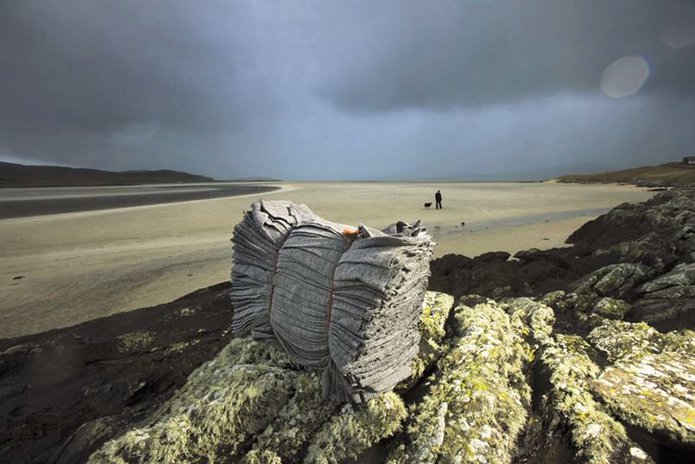
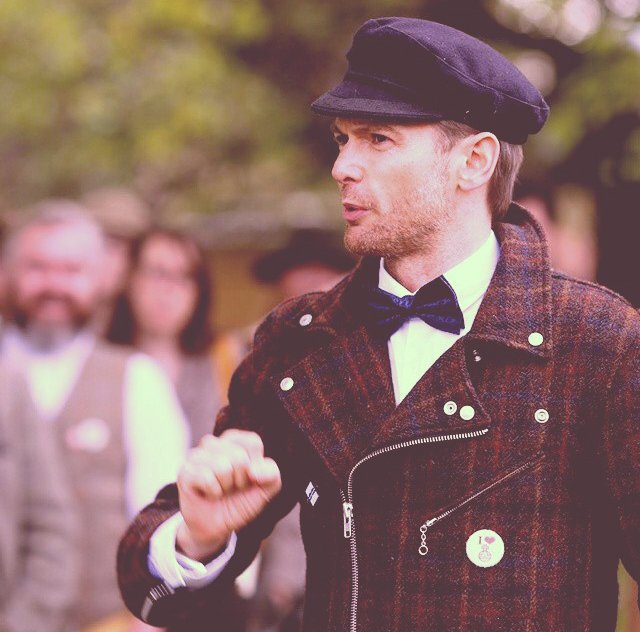
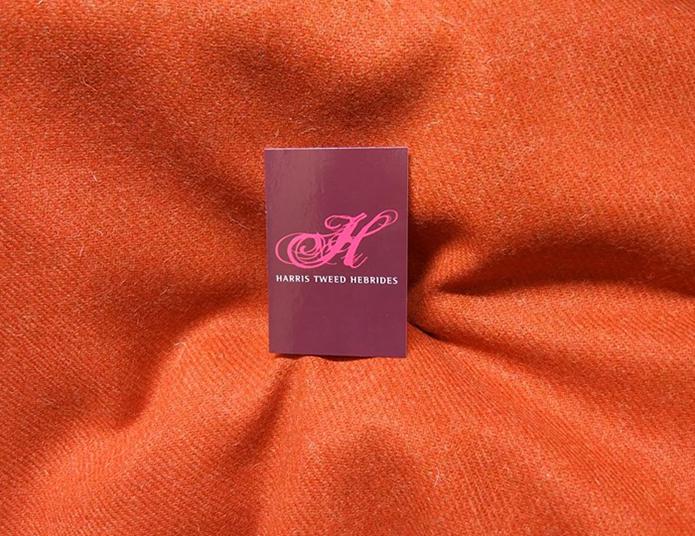
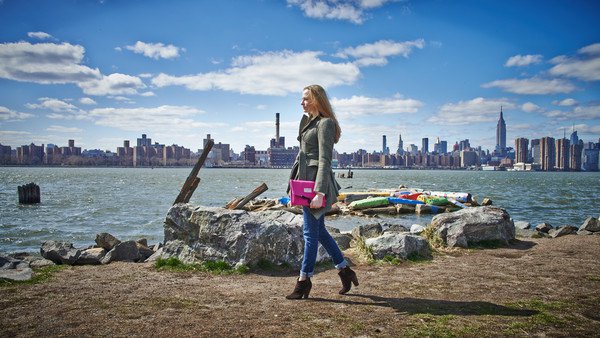

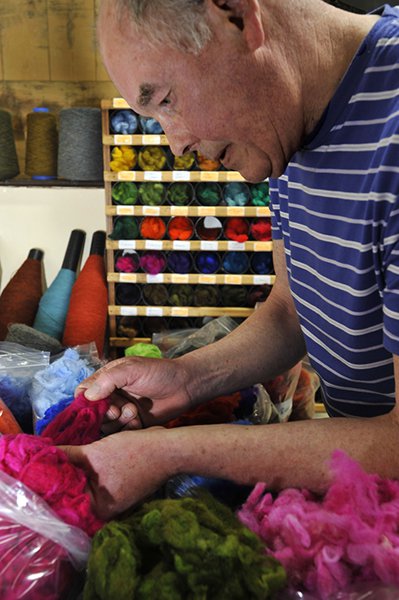
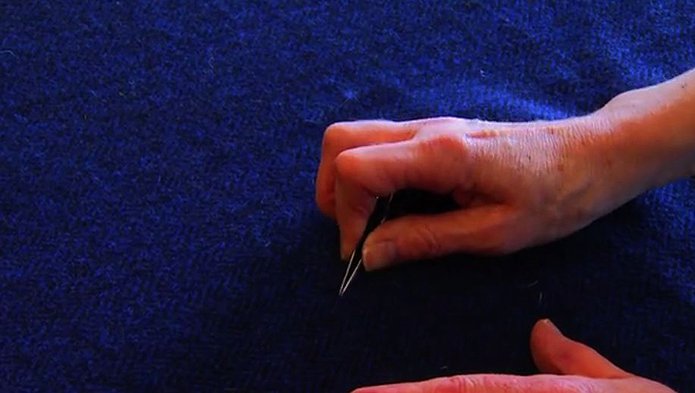
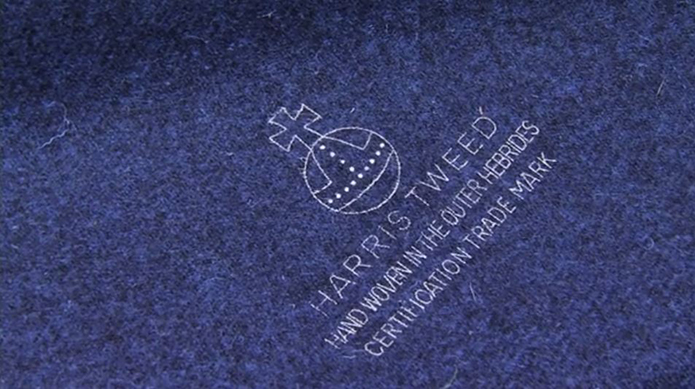

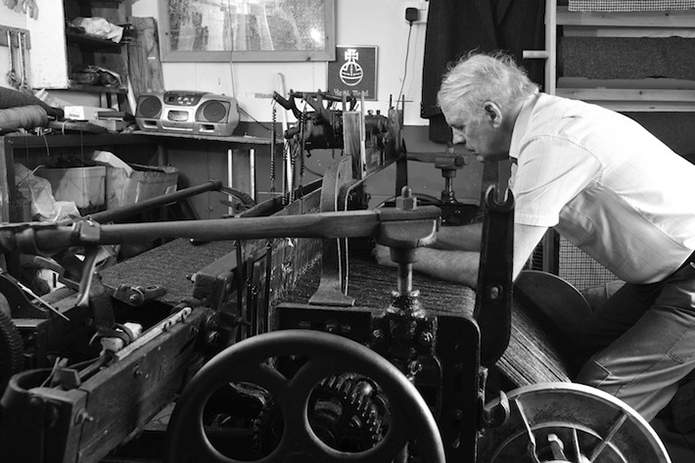
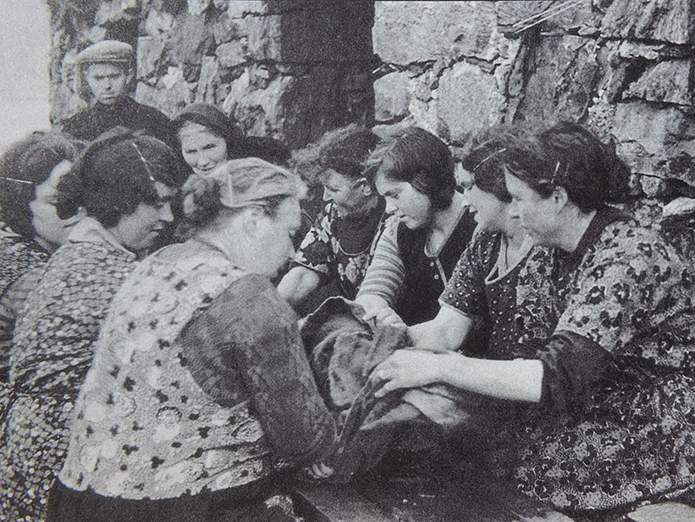
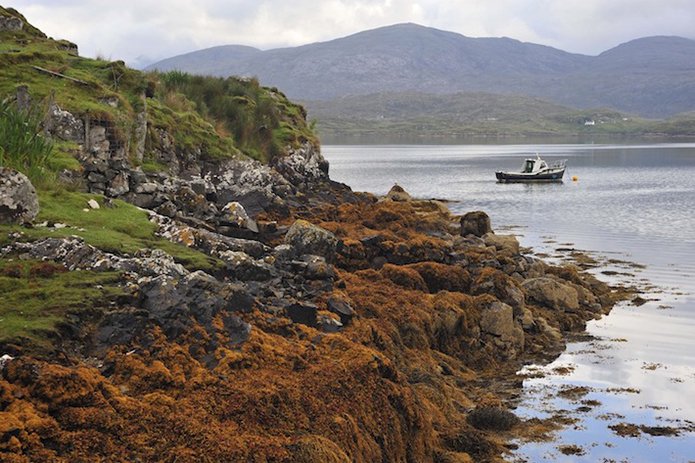
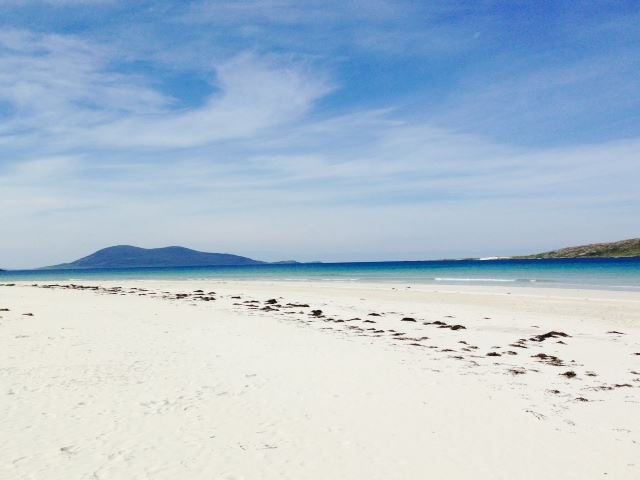
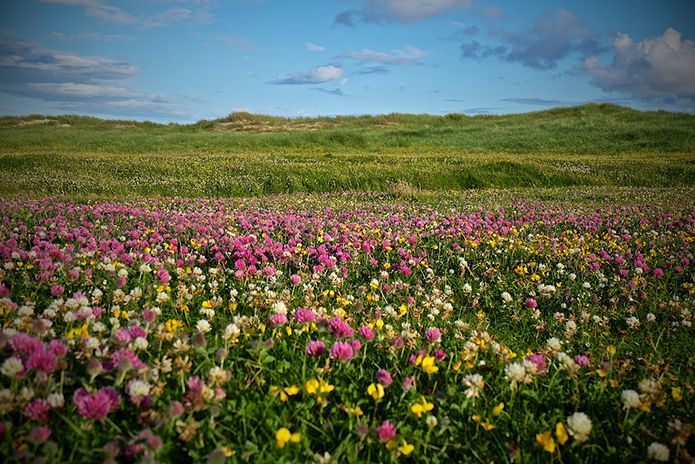
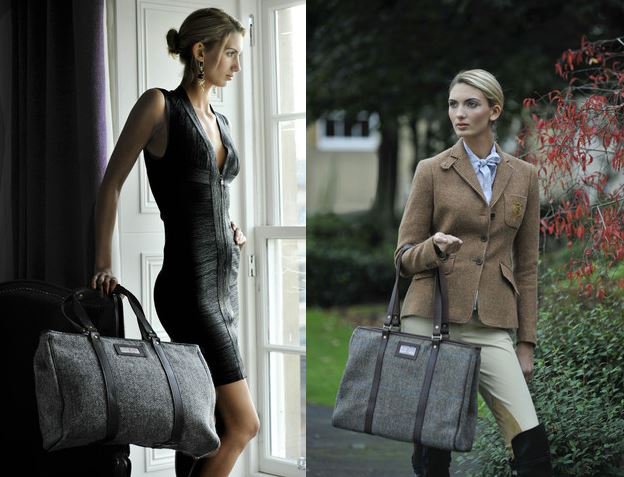
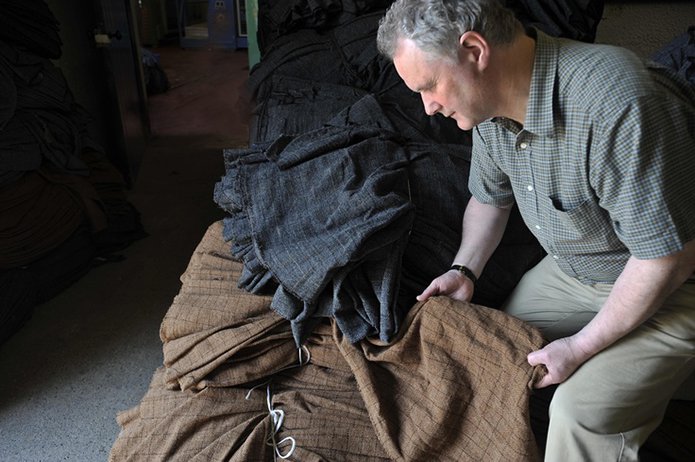
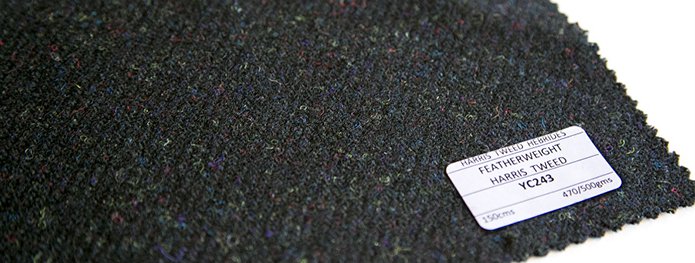
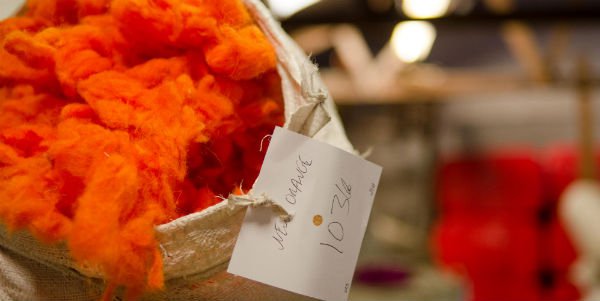
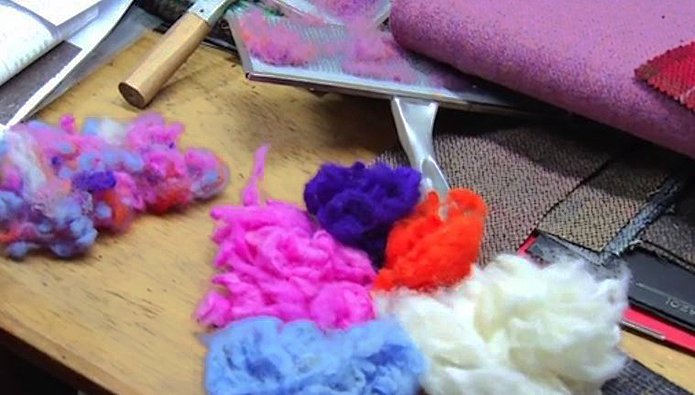

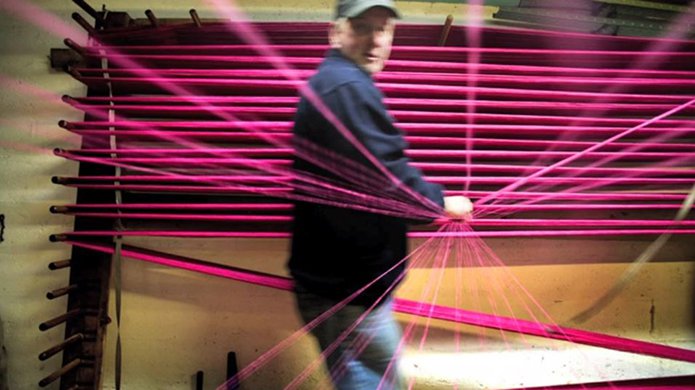

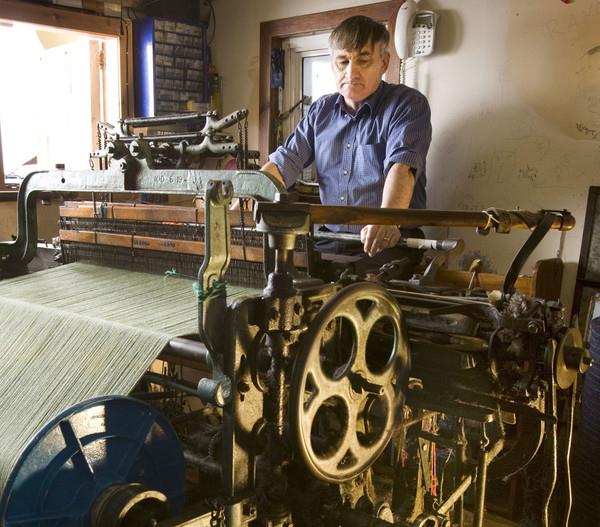
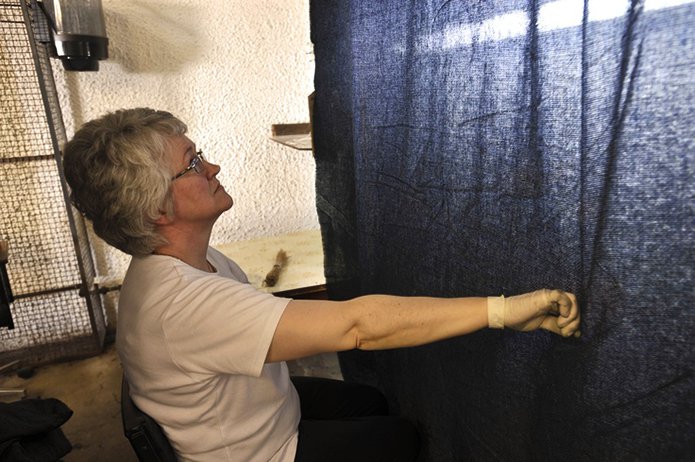
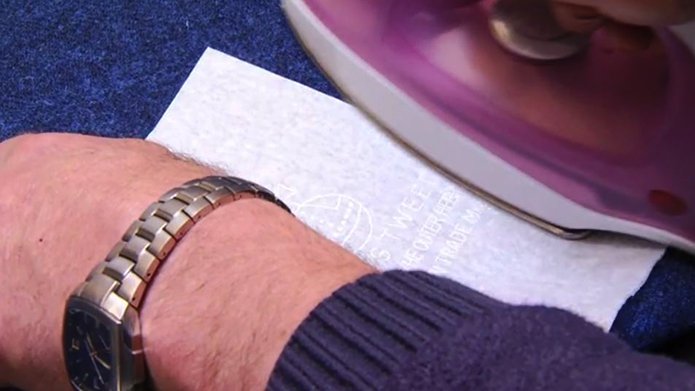

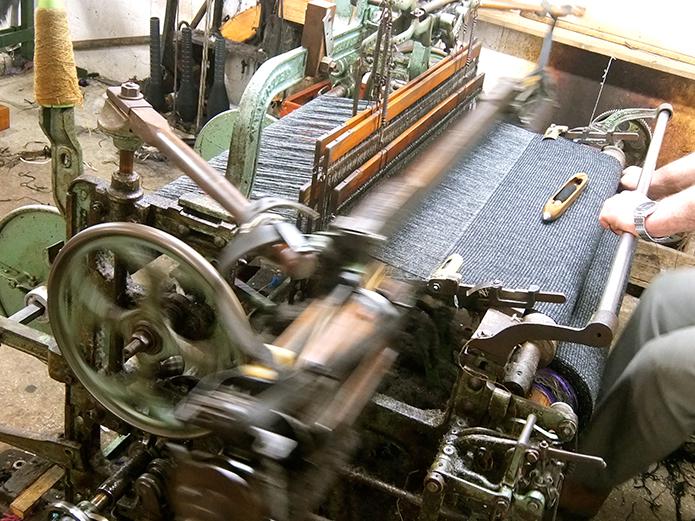
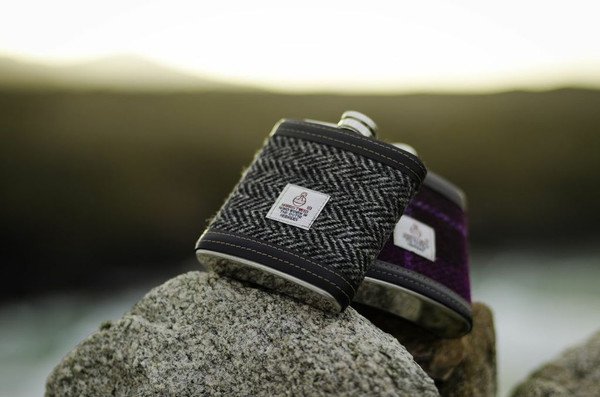
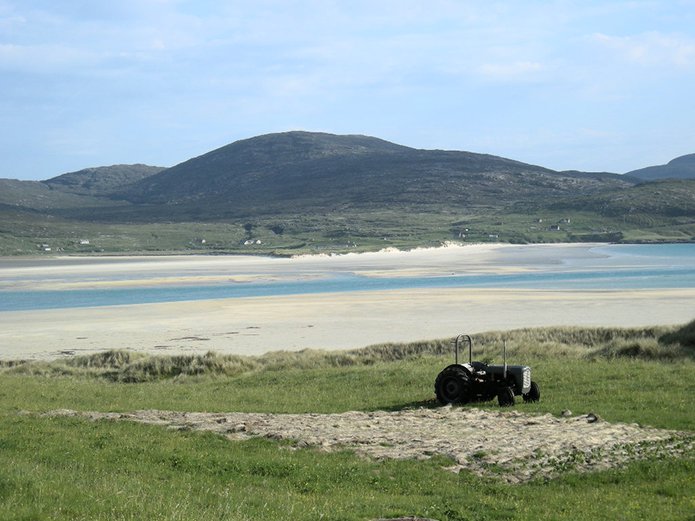
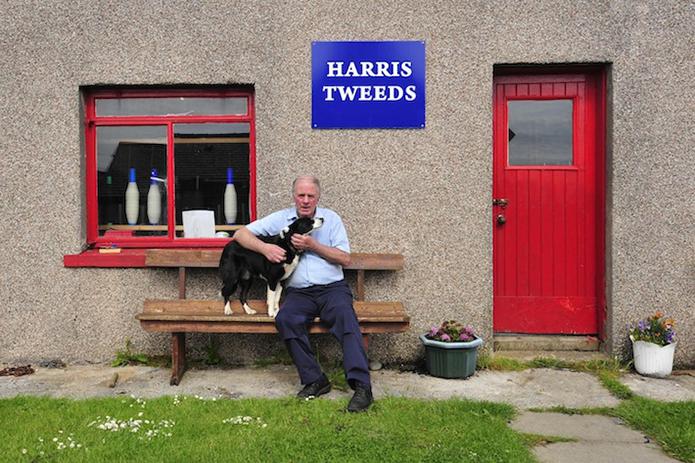
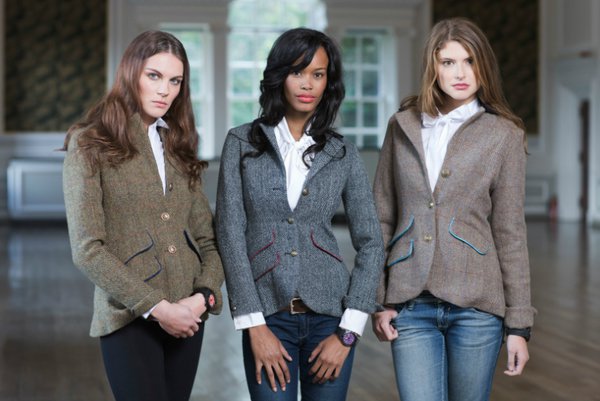









Wednesday, December 16th 2015 at 8:16 pm
[…] to touch. Of course some quilts are more sensuous and tactile than other; I really like the feel of Harris Tweed contrasted with British velvet, other don’t, so it is all a matter of personal taste and […]